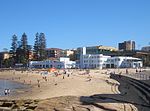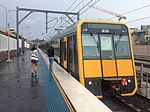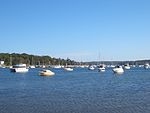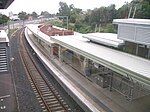Blackwoods Beach
Beaches of New South WalesCronulla, New South WalesGeography of SydneySurfing locations in New South WalesSydney geography stubs ... and 1 more
Use Australian English from April 2022

Blackwoods Beach is a small rocky secluded beach in the Sydney suburb of Cronulla in New South Wales, Australia. Blackwoods Beach is situated near Shelly Beach which is visible from the south. Blackwoods beach was named after Dr. Fredrick Martindale Blackwood, who purchased the land in 1900. He built a house there, which he named Roker, and lived on the property from 1901 to 1907, selling it the following year.Blackwoods Beach by the Dharawal people for thousands of years.
Excerpt from the Wikipedia article Blackwoods Beach (License: CC BY-SA 3.0, Authors, Images).Blackwoods Beach
The Esplanade, Sydney Cronulla
Geographical coordinates (GPS) Address Nearby Places Show on map
Geographical coordinates (GPS)
| Latitude | Longitude |
|---|---|
| N -34.06 ° | E 151.15694444444 ° |
Address
The Esplanade
The Esplanade
2230 Sydney, Cronulla
New South Wales, Australia
Open on Google Maps









